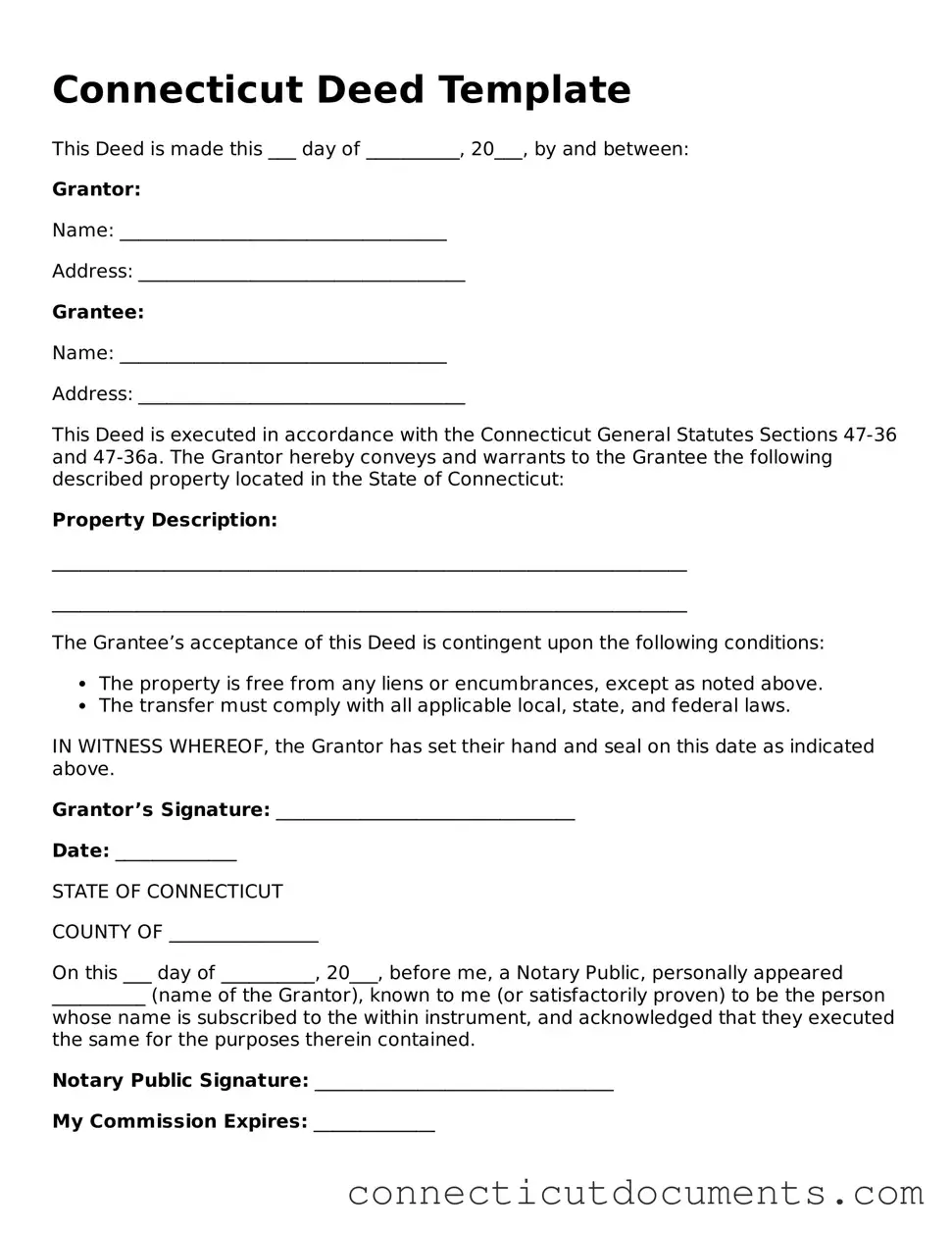What is a Connecticut Deed form?
A Connecticut Deed form is a legal document used to transfer ownership of real property in the state of Connecticut. This form serves as evidence of the transfer and outlines the details of the transaction, including the names of the parties involved, the property description, and any terms of the transfer. It is essential for establishing legal title to the property.
What types of Deeds are available in Connecticut?
In Connecticut, there are several types of deeds, including Warranty Deeds, Quitclaim Deeds, and Special Warranty Deeds. A Warranty Deed guarantees that the seller holds clear title to the property and has the right to sell it. A Quitclaim Deed transfers whatever interest the seller has in the property without any guarantees. A Special Warranty Deed provides limited assurances about the title, covering only the period during which the seller owned the property.
How do I complete a Connecticut Deed form?
To complete a Connecticut Deed form, you need to fill in the required information, including the names of the grantor (seller) and grantee (buyer), the legal description of the property, and any relevant terms of the transfer. It is crucial to ensure that all information is accurate and complete. After filling out the form, it must be signed by the grantor in the presence of a notary public.
Is notarization required for a Connecticut Deed?
Yes, notarization is required for a Connecticut Deed. The grantor must sign the deed in front of a notary public, who will then affix their seal to the document. This step ensures that the identity of the signer is verified and adds an additional layer of authenticity to the deed.
Where do I file a Connecticut Deed after it is completed?
Once the Connecticut Deed is completed and notarized, it must be filed with the town clerk's office in the municipality where the property is located. Filing the deed is essential for making the transfer of ownership public and officially recorded. There may be a filing fee, so it is advisable to check with the local town clerk for specific requirements.
Are there any taxes associated with transferring property in Connecticut?
Yes, there are taxes associated with transferring property in Connecticut. The state imposes a conveyance tax on the transfer of real estate. This tax is calculated based on the sale price of the property. Additionally, municipalities may impose their own conveyance tax. It is important to consult with a tax professional or local government office to understand the specific tax obligations related to your property transfer.
Can I use a standard template for a Connecticut Deed?
While it is possible to use a standard template for a Connecticut Deed, it is crucial to ensure that the template complies with state laws and includes all necessary information. Customizing the deed to reflect the specific details of your transaction is often advisable. Consulting with a legal professional can help ensure that the deed is properly drafted and executed.
What happens if a Connecticut Deed is not recorded?
If a Connecticut Deed is not recorded, the transfer of ownership may not be legally recognized against third parties. This means that someone could potentially claim ownership of the property, or a subsequent buyer may not be aware of the previous transfer. Recording the deed protects the rights of the grantee and provides public notice of the ownership change.
How can I obtain a copy of a recorded Connecticut Deed?
To obtain a copy of a recorded Connecticut Deed, you can visit the town clerk's office in the municipality where the property is located. Many town clerks also offer online access to property records. There may be a small fee for obtaining copies, and it is advisable to provide the property address or the names of the parties involved to facilitate the search.
What should I do if I encounter issues with a Connecticut Deed?
If you encounter issues with a Connecticut Deed, such as disputes over ownership or errors in the document, it is important to seek legal advice. A qualified attorney can help address any concerns and guide you through the process of resolving issues related to the deed. Early intervention can often prevent further complications down the line.
